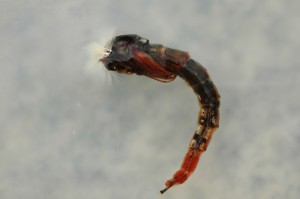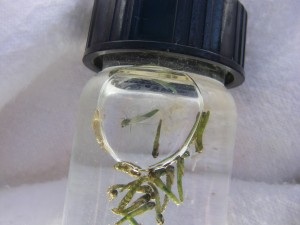Riseform Flyfishing Ventures BLOG » On the Waters » Time to get serious about tying flies for the 2011 stillwater season
Time to get serious about tying flies for the 2011 stillwater season
It’s early Feb and definitely time to spend time at the vice. I always start by replenishing my stock of chironomid pupa. Despite probably having literally thousands of pupal patterns there are always new colour combinations, sizes to tie. Much of the tying ideas come from looking at the real bugs that have been sampled through the use of a throat pump. Here are some images of live pupa to give you some ideas of how diverse they are in terms of colour and size. Time to get back to the vice,
Filed under: On the Waters












I have sampled mud from ponds and the bloodworms were red. From fast rivers I have sampled green bloodworms. I don;t have enough data but my small samples leads me to believe the lower the oxygen content the more red the midges will be, “they” say the red is from the hemoglobin that they need to deal with low oxygen environments.
Hi Jeremy,
I can’t find anything in the literature that specically says environmental conditions such as water chemistry characteristics have an impact on the colouration of the chironomid pupa but it does make sense that their environoment does have some influence. It works that way with lots of other animals. Safe to say there are those pupal colours that seem to be common in most stillwaters wherever they are situated in the world.
Hi Brian, Bob. As always, Mr. Chan was very gracious in his answer, but I believe the question may have been misinterpreted.
I will rephrase the question ch my own curiosity;
Is there an environmental element to the color of chironomids, such as water PH or the specific geology of the lake’s substrate, or is it that different species are different colors and not affected in terms of pupal color by their environment?
Thank you.
Hi Bob,
There are literally thousands of species of chironomids found in North American waters. As fly fishers we need to know that there are various sizes and colours, particularly in the pupal stage. So, the short answer to your question is that you have to try and imitate all those real pupal colours you see at various lakes. One consolation is that the most common pupal colour is black.
You still have lots of time to tie before we see any open water.
cheers,
Brian
Hi Brian: Looking outside today and you would think its back in December early January ….not almost the first week of March. Anyway much like you Im sitting here tying chironomid patterns. I had a look at some of your sample photos here and a questions came up. What determines the various colours of chironomids ? Are they just all different sub species or do they tend to turn colours based on the colours of the bottom of the lake, food etc.
Thanks
Take care happy tying.
Bob Taylor